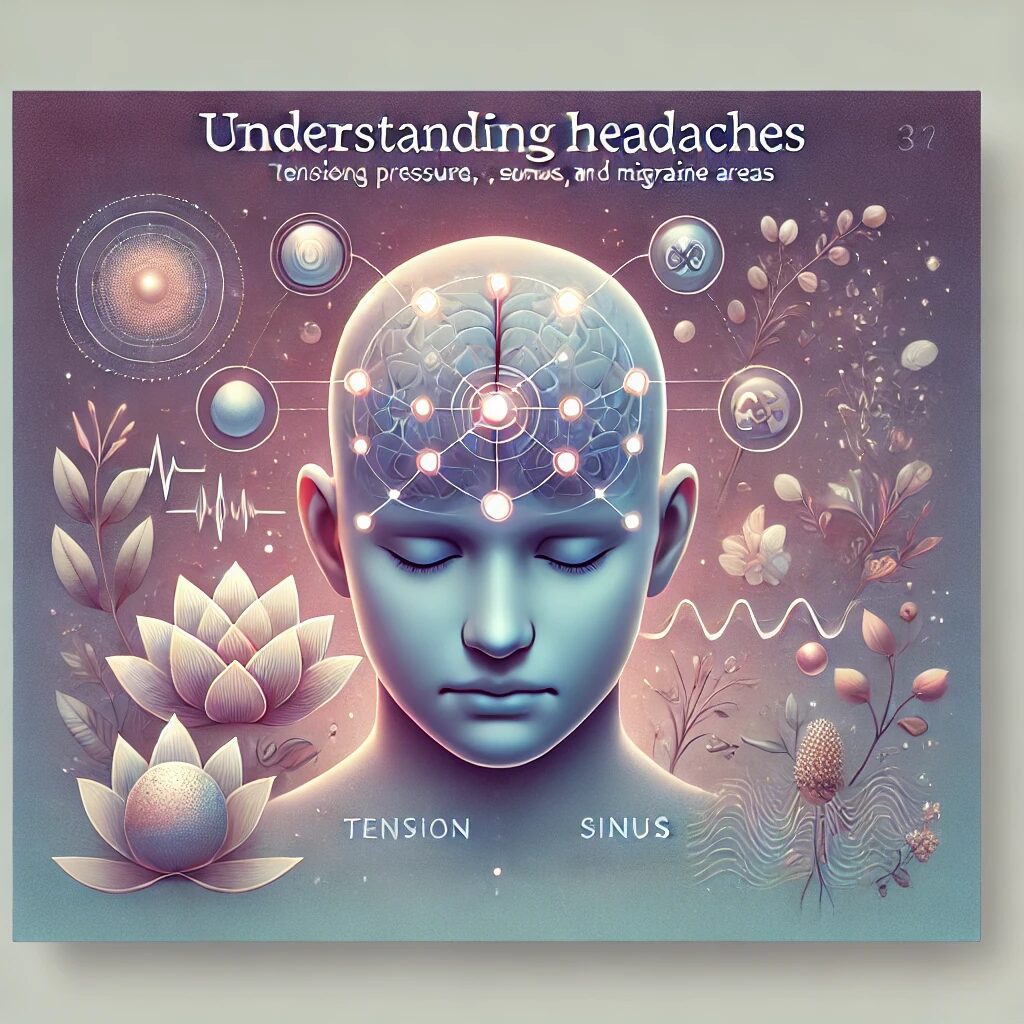Effective Ayurvedic Home Remedies for Headache Relief: Natural Solutions for Wellness
By Dennis Bluthardt at Namaste Studios
In our fast-paced world today, headaches are pervasive. Millions upon millions of people experience them every day. They can happen because of stress, poor posture, or even looking at one thing for too long. Whatever the cause, many people are begging for an out.
Luckily for those not interested in compression eyewear or Punk Bane costumes, the drive for natural medicine continues to grow.
Inside this push to combat drugs like ibuprofen that can lead to intestinal problems are Ayurvedic home remedies for headaches. Learn about chili peppers, ginger tea, peppermint oil, and other compression methods.
Ayurveda is a school of medicine practiced in India. The name comes from “Ayur (=life)” and “Veda (=knowledge or science).” This is not a reductionist Western school of medical study. The effects of certain things are not the root of the Ayurvedic process. Instead, this science is about balance and what to feed your body to maintain balance.

Understanding Headaches
A headache may be triggered by stress, dehydration, muscle tension, or several other factors. Stress can lead to a tension headache, a dull, aching sensation all over your head, and tenderness or sensitivity around your neck, forehead, scalp, or shoulder muscles. Meanwhile, a migraine headache can set off intense, throbbing pain that’s typically accompanied by a variety of additional symptoms, including light sensitivity, nausea, and more. At the most severe end of the scale, a cluster headache might create a pattern of headaches that recur regularly over time: the pain is intensely sharp, located in and around a single eye, and it’s the least common type of headache.
Ayurvedic medicine treats the entire body; in other words, it assumes that a mind-body-spirit balance is necessary to maintain physical health. As such, it views the root of all disease as an energetic imbalance that occurs within your body along one (or more) of three doshas, universal energies (life forces, if you will) that exist within you on a physical, emotional, and spiritual level: Vata Dosha, Pitta Dosha, and Kapha Dosha.
Thus, Ayurvedic medicine focuses initial treatment on determining which Dosha is out of balance. Why? Because, as I mentioned earlier, these disturbances often show up as ‘disease’ in the body, in the case of a headache: if Kapha is out of balance, perhaps you’re suffering from tension headaches; if Vata is too high, you could develop migraines, and so on. To treat your headache disorder, necessary changes in diet, alterations to lifestyle, or appropriate natural herbs might be just what you need to regain balance and enjoy a little peace.

Ayurvedic Home Remedies for Headache Relief
Herbs like ginger, peppermint, and basil have therapeutic uses.
Ginger treats swelling and nausea, a common symptom of migraines. Cut up a few slices of fresh ginger and steep them in hot water for about 10 minutes.
Peppermint provides a pleasant effect that can chill or calm things down. Once ground down, you can add water to make a paste or pour hot water over it to make a tea.
Basil is known to calm things down. Use it like you would ginger or peppermint to cut through the glut, and a cup of basil tea will work as a pleasant, relaxing alternative to the typical two.
Lavender and eucalyptus oil are great aromatics to have as well. Lavender provides a calming effect that can help with stress and insomnia. You can massage the scalp with diluted lavender oil or use it in a diffuser. Eucalyptus oil has a high concentration of Cuecolyptone. The more of this, the better the oil can further promote respiration, deodorize, and scent a room. Use it directly on your head as a head massage to help eliminate functional tension headaches.
Eat foods that hydrate you and are high in magnesium. Magnesium, a natural calcium channel blocker, will prevent you from having an issue with that or muscle tension. Foods high in magnesium include spinach, nuts, legumes, and whole grains. Some high-protein foods include eggs, spinach, and nuts. The safe upper limit for magnesium is 350 milligrams (mg) daily for adults and children over 8 years of age. It’s best to get your magnesium from the foods you eat.
Have warm food. Ayurveda teaches human beings about being warm. This makes sense.

Lifestyle Changes and Practices
Yoga, meditation, and better sleep for headache relief:
Yoga poses, and meditation is common remedies to the fight or flight mode many of us are far too familiar with due to everyday stress. Stress and tension lead to headaches. Fight or flight must have less grip on you when your mind and body are at peace. Yoga will reduce your muscles’ tension and bounce back from that perpetual mode to provide temporary relief. Child’s Pose, Cat-Cow Stretch, and Forward Bend yoga poses, for example, may be easy enough to learn and should mainly target the muscles in your neck and shoulders. Have a go-to yoga routine that you may use every day. To optimize results, make this part of your daily morning routine.
I recommend meditation to relax your consciousness and escape from your subconscious deeply.
Use a strategy guide for deep breathing and decide what meditation you will use. When inhaling incense, for example, think of a single imagined scene that lasts the duration of the smoke’s rise.
Please note that I haven’t mentioned anything that will get in the way of headphones, nor anything auditory, since I am a headphone enthusiast offering yoga and meditation as alternatives or supplements.
Remember that you will tire if you use or strain your mental mojo during yoga or meditation. The body will physically bring down your brain(s) to convince you of your tiredness. So, remember these ideas, especially for night stretches, bedtime routines, and before-bed activities.
Many people (“headache community” members or not) probably struggle with sleep, or we may be nighttime creatures. Our 24-hour sleep-wake cycle makes for irregular sleep hours, which reduces QSV (quantity sleep value). Our quiet before the storm seizes that darkness where we worry not (how can we?), which leads to a lack of deep sleep and REM.
Ultimately, combat that fear of darkness and make total darkness (<0.01 lux) your new goal for a bedroom.
A new evil would be suggested to wear a sleep eye mask. The American Sleep Association has found that sleep eye masks can disturb your REM. Consider spending on the best eye mask while you learn to remove old window blinds and shutters or install new ones.
Unplug all tablets, cellphones, and other devices from your bedroom, for they play the ultimate light devil roles in EMF and blue light!
It may have been difficult for ancient Egyptians and primitive Mayans to understand dreams when their explanations might have been better spent arguing for creating their dream creativity elsewhere, versus their worldly, primitive minds. Contemporary (yet slowly evolving and none-the-wiser) humans might be closer to the truth of dreams now than ever. As we already know, for example, from the early human studies of religion, we forge categories that let us better handle abstractions about which we hardly understand. Currently, which I have set for our contemporary golden age for dreaming to have been around 1900 (even though this is a little past the middle of human recorded time), our dreams were about sex. Sigmund Freud had released his interpretation of dreams at this time and gave us just enough ammunition to wildly taint our brains with his thoughts versus our perfect virginity! Fight the power today and be a virgin!

When to Seek Professional Help
Headaches are common, but a few signs indicate you should go to the doctor just in case.
- If you are confused, have difficulty speaking, or have any changes to your vision.
- If the headache is sudden and severe (almost always described as “thunderclap” by those who experience it)
- Persistent headaches that seem to get worse over months
- One that interrupts your daily tasks
Headaches that happen more than 15 days out of the month are considered chronic, and that does a number on your QoL, which means this is grounds for seeing a doctor. You can get a diagnosis for what type of headache you’re dealing with and whether it may result from something else you have going on. They will also be able to help you find a medication (or other treatment methods; there is a vast array of them) that is perfect for those looking for migraine-related care. The earlier you catch them, the better your chances of finding significant relief; the end goal is not to get you to that chronic stage. It is very positive for the individual if they know when to seek help.
Ayurvedic home remedies for headaches provide a safe, natural, and effective way to relieve headaches at home.
In line with holistic health, Ayurveda provides tools for natural daily headache treatment that address the root causes of headaches, so you don’t just treat the site of the pain. Because these tools (like easy-to-find herbal infusions, essential oils, and treatments through food) help to balance your body, they can help you overcome chronic disease.
And you won’t need to put another confusing mixture of chemicals into your body (though, just like foods, some Ayurvedic herbal remedies aren’t considered safe for everyone).
Don’t you have a headache today? That’s perfect. You can take your morning ginger tea (or turmeric or peppermint!).
To learn more, visit Ayurveda at Namaste Studios to book an Ayurveda session. Additionally, you can find more of our Ayurveda Blogs here.
For a Limited Time: Get your NEW MOON JOURNAL for a massive discount at Amazon here!
Bonus for blog readers: Learn how AI Chatbots Work. Click here for a FREE WEBINAR – It’s AMAZING!




